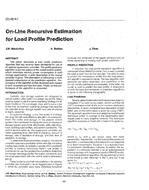Click here to purchase
When trying to determine best design practices for specificindoor spaces, building designers may encounter uncertainties regarding controlof airflow, indoor air quality, thermal comfort, or heat transfer. Computermodels allow designers to quantitatively evaluate multiple designs quickly andwith a good degree of accuracy. This chapter expands on the general guidance ofChapter 13 in the 2017 ASHRAEHandbook—Fundamentals, with the addition of industry-specific advice andexamples to aid designers in modeling indoor applications. The two methodsfeatured in this chapter are computational fluid dynamics (CFD) and multizone(MZ) modeling. Although this chapter is intended to be a fast-start guide formodeling indoor airflow, engineers should have a basic understanding of fluidmechanics and the modeling principles described in Chapter 13 of 2017 ASHRAE Handbook—Fundamentals.PRELIMINARY CONSIDERATIONSCOMPUTATIONAL FLUID DYNAMIC (CFD) METHODTerminologyOverview of CFD Simulation ProcessCFD EXAMPLESSimple Office with Diffusers and Returns ExampleChilled Beam ExampleDisplacement Ventilation ExampleData Center Design ExampleViral Containment in Hospital Ward ExampleNatural Ventilation ExampleIndustrial Warehouse ExampleMULTIZONE SIMULATION METHODMultizone Simulation of a Typical Office BuildingNo. of Pages: 24
Citation: 2019 ASHRAE Handbook¿¿¿HVAC Applications
Product Details
- Published:
- 2019
- ISBN(s):
- 9781947192126
- Number of Pages:
- 24
- Units of Measure:
- Dual
- File Size:
- 1 file , 76 MB
- Product Code(s):
- D-A592019IP


